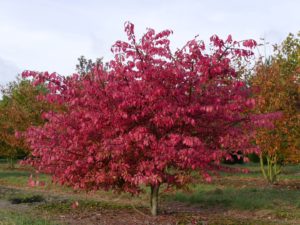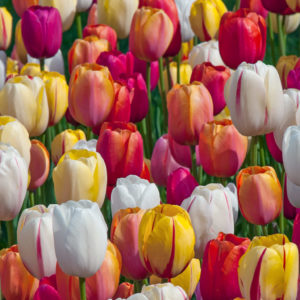|
Every autumn in Illinois brings with it a breathtaking change of color in the leaves of our trees, but although it’s late September, temperatures have been steadily topping out in the nineties every day. Not a traditional sign of Fall, yet the trees are changing color and dropping leaves as if they were not aware of the hot and humid weather.
Aren’t the leaves supposed to change when it gets cooler and we see some frosts overnight?
Do the trees know what time of year it is despite the unusually warm temperatures?
One explanation, according to Native American myth, is that the hunters in the Heavens killed the Great Bear in autumn and its blood dripped over Earth’s forests coloring some of the leaves red. As the hunters cooked the meat, fat dripped from the Heavens and colored some of the leaves yellow.
Not scientific enough for you? Need a more botanical answer?
In case you were wondering what actually initiates the changing color of the leaves and their eventual fall to the ground, read on…
Most people think that cool weather or frost causes the leaves to change color. It is true that there is usually a correlation between the cooler air and the onset of the autumn show. However, while temperature may impact the color intensity, it has less impact on the timing of the color transitions we see in the Fall than do other factors.
A quick trip back to high school Botany 101. During the spring and summer most of the foods necessary for the tree’s growth are manufactured in the leaves. This food-making process takes place in the numerous cells containing chlorophyll, which gives the leaf its green color. This extraordinary chemical absorbs the energy from sunlight that is used in photosynthesis, the transformation of carbon dioxide and water to carbohydrates, such as sugars and starch. In late summer or early autumn, the days begin to get shorter, and consequently, the nights are longer. Like most plants, deciduous trees and shrubs are rather sensitive to the length of the dark period each 24-hour cycle. When nights get long enough, the cells of the leaves begin to block transport of materials such as carbohydrates from the leaf to the branch. They also block the flow of minerals from the roots into the leaves. Because the starting time of the whole process is dependent on night length, fall colors appear at about the same time each year in a given location, whether temperatures are cooler or warmer than normal.
The fact is, the vivid yellow and orange colors have actually been there throughout the spring and summer, but we haven’t been able to see them. The deep green color of the chlorophyll, which helps plants absorb life-giving sunlight, hides the other colors. In the fall, fewer hours and less intense daylight prompt the leaves to stop the food-making process. The chlorophyll breaks down, the green color disappears, and the yellow and orange colors already in the leaf become visible again to the human eye. As the trees break down the green pigments and nutrients stored in the leaves they are shuttled into the roots for reuse in the spring.
Along with the green pigment of chlorophyll are carotenoids, yellow to orange pigments, which, for example, give the orange color to a carrot. At the same time other chemical changes may occur which produce red anthocyanin pigments resulting in even more variation in the Fall color scheme. Some mixtures give rise to the reddish and purplish fall colors of trees such as dogwoods and sumacs, while others give the sugar maple its brilliant orange. For most of the growing season these colors are masked by the great amounts of green coloring. The variations in Fall color are due to the mixing of varying amounts of chlorophyll residue and the other pigments in the leaf combined with a varied response to weather conditions. For instance, as the nights become cooler, the sugars trapped in the leaves of some oaks and maples will often form a red pigment. The degree of color will also vary from tree to tree. Leaves directly exposed to the sun may turn red, while those on the shady side of the same tree or other trees may be yellow.
As the fall colors appear, other changes are taking place. At the point where the stem of the leaf is attached to the tree, a special layer of cells develops and gradually severs the tissues that support the leaf. At the same time, the tree seals the cut, so that when the leaf is finally blown off by the wind or falls from its own weight, it leaves behind a leaf scar. Most of the broad-leaved trees in Illinois shed their leaves in the fall. However, the dead brown leaves of the oaks and a few other species may stay on the tree until growth starts again in the spring.
In general, autumn weather conditions favoring the most brilliant colors are warm sunny days and cool, but not freezing, nights. When there is mainly warm, cloudy and rainy weather in the fall, the leaves may have less red coloration. A few hard frosts can cause the leaves to wither more quickly and drop to the ground.
So, in case you were wondering, with all due respect to the Native American myths, it is a combination of temperature, light, and water supply that have an influence on the onset, the degree, and the duration of fall color.
Enjoy it while you can, because it doesn’t last long!
|







